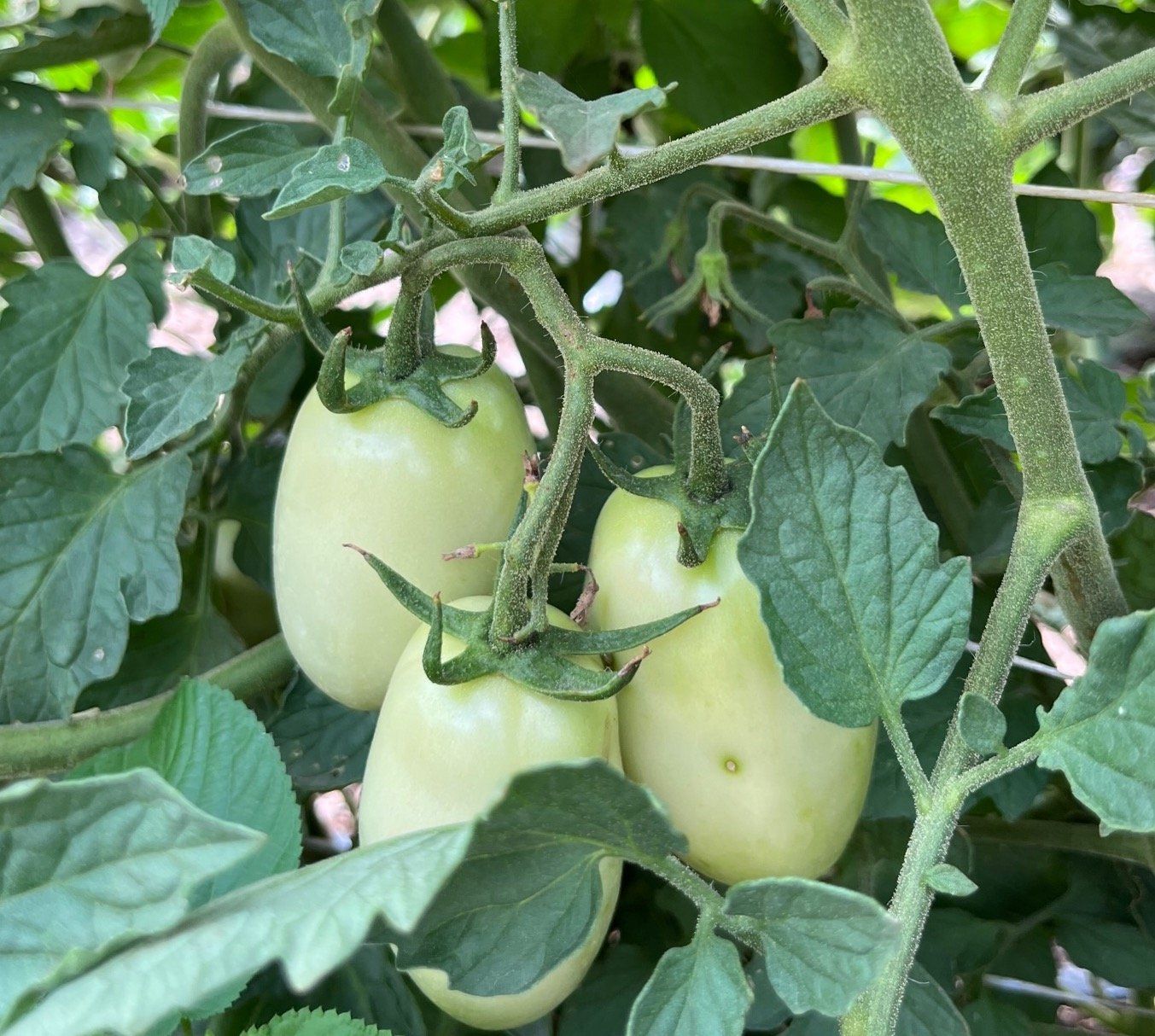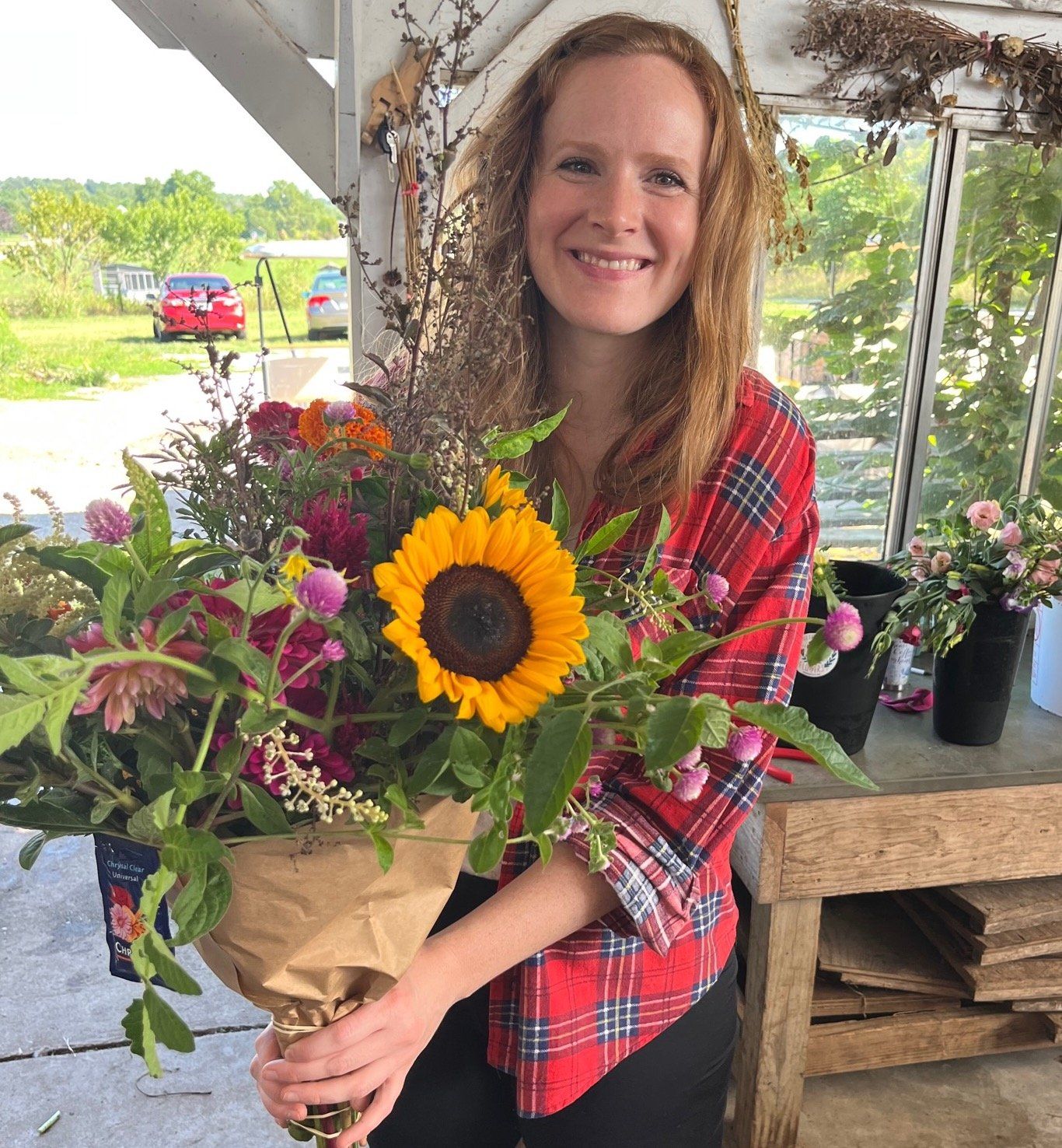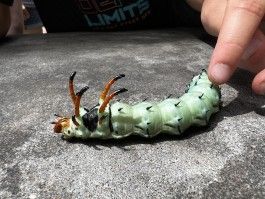Thought you might enjoy the photo of this crazy native caterpillar we saw for the first time a couple of weeks ago; it's called a hickory horned devil, and feeds exclusively on hickories.
This week we continue with our essay about what it means for Millsap Farm to be sustainable. People often tour our farm to see a sustainable farm in action, either as educational groups, or as part of pizza night. When they arrive on farm, I give a brief introduction; first generation farm family, 25 acres, on farm for 15 years, 2.5 acres in vegetable production, selling through CSA, Farmers Market of The Ozarks, and a few restaurants, three or four full time farm workers, etc. Then I explain that we try to make all of our decisions through the lens of the three P’s; Planet, People, and Profit. Profit is the third leg of our sustainability stool, and it is every bit as important as the others. If we don’t farm in a profitable manner, we will not be in business for very long. So as we make choices about how to grow and sell produce, we look carefully at how it will impact our profitability.
One example of this is the amount we do or don’t heat our greenhouse; many greenhouses use large propane forced air heaters to keep their greenhouses warm through the winter, but we have chosen to avoid the expense of fueling these heaters, because in our analysis, we are better off using less heat, and providing it with wood burning furnaces. This also means we grow things with require less heat, and that means less risk; if our greenhouse gets a little cold in January, that’s not a problem for our head lettuces, carrots, and spinach, whereas if we were growing tomatoes or other heat loving crops using higher temperatures, we would lose our entire investment if we had a freeze at the wrong time. Instead we wait until a little later in the year to grow the heat lovers, when we can rely on the sun to do 90% of our heating, and supplement with wood and propane to keep thing s going on the occasional very cold night in March and April. This way we still get to keep our members and farmers market customers happy with early produce, but don’t have a risky investment.
Another example of examining our farm structure with profit in mind is the CSA model. We love that one way we are linked to our members is that we all have a financial stake in the outcome each season. Our members invest in us, considering it a good investment that will yield healthy food for their families, a cleaner environment, and a satisfying connection to the source of their food. At the same time, their investment helps our bottom line by giving us operating capital during the early part of the year, when many farms take out risky loans to pay for seeds, fuel, tools, fertilizer, labor, and all the other things it takes to grow food in the earth. Instead of costly credit, we use the money you all have entrusted to us to get our season started debt free. In a business as inherently risky as farming, it’s nice to start each year on a solid financial footing provided by our members, which is one more reason we love CSA. I hope you’ve enjoyed the brief snapshot that these three P’s have given you of our decision making framework on the farm, please feel free to ask questions and communicate with us. We love to hear from our members.
Thanks for choosing us to be your farmers.
Curtis and Autumn and Carson and Cameron and Gianna and the rest of the crew.




